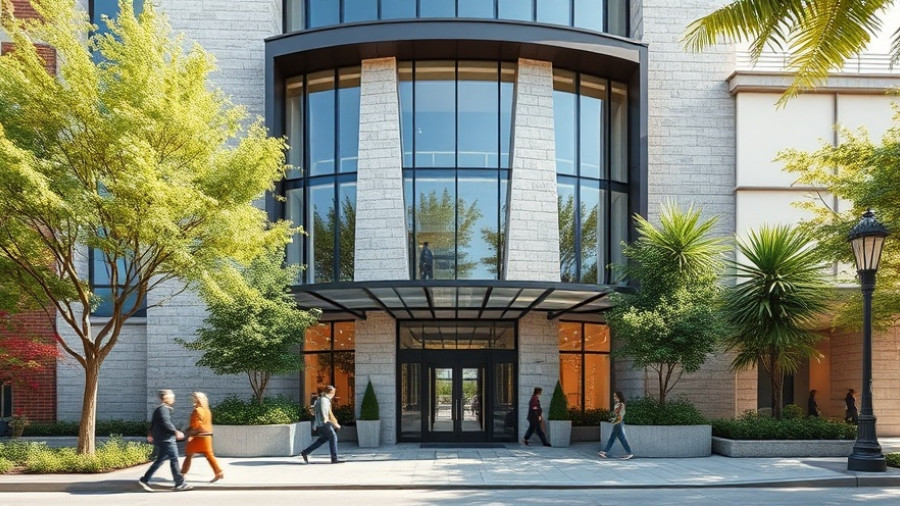
A New Beginning for New Jersey’s Incarcerated Women
On October 15, 2025, a significant milestone was marked in the evolution of women’s corrections in New Jersey. Governor Phil Murphy participated in a groundbreaking ceremony for a new, state-of-the-art prison specifically designed for women. The $312 million facility, set to replace the notoriously troubled Edna Mahan Correctional Facility in Clinton, aims not only to enhance safety but also to prioritize rehabilitation and the dignity of incarcerated women.
A Facility with a Purpose
The new 400-bed, 33-acre campus will be located in Chesterfield Township and is the result of years of advocacy for reform by state officials and community advocates alike. The current Edna Mahan facility has been criticized for decades due to reports of assault and abuse, prompting the closure decision announced in 2021. Advocates have long called for a shift from punitive practices to rehabilitation, and the new design reflects this transformative vision.
Addressing Past Failures
Historically, the Edna Mahan prison has been a symbol of failure in addressing women's safety within the correctional system. Widespread reports of sexual misconduct and physical violence led to federal intervention and monitoring. In contrast, the new facility promises a rehabilitative and supportive environment, as outlined by Commissioner of the New Jersey Department of Corrections, Victoria Kuhn. She emphasized that the new construction represents not just a physical building but a cultural shift aimed at uplifting and empowering the women housed there.
Architectural Vision for Healing
At the heart of the design is trauma-informed architecture that blends safety with natural surroundings, thereby creating a therapeutic environment. The facility will feature open spaces that encourage education, vocational training, and communal healing. This contrasts sharply with the antiquated structures of the Edna Mahan facility, where outdated conditions contributed to an oppressive environment. As pointed out by various stakeholders, the new prison intends to offer a space conducive to learning and growth, helping women prepare for reintegration into society.
Legislative Reforms and Future Perspectives
This prison construction comes at a pivotal time for New Jersey’s penal reform landscape. The closure of Edna Mahan is projected to save the state over $160 million in maintenance costs and create an opportunity to redefine corrections within the state. Lawmakers are also pushing forward the Incarcerated Women’s Protection Act to codify reforms ensuring that the improvements made are preserved long-term.
Support from Former Inmates
The voices of those most affected by these changes are critical to the discussion. Myrna Diaz, a former inmate who spent 14 years at Edna Mahan, highlighted how the new facility would improve conditions significantly. She noted changes such as dormitory-style living spaces and a greater focus on dignity. "Instead of cold metal tables and confinement, there will be spaces for education and rehabilitation," she remarked, signifying the hope and renewal that this new facility embodies.
Community Connections and Accessibility
Designed to be centrally located, the new prison will improve accessibility for families and friends wishing to visit incarcerated women, a crucial factor in supporting successful reentry into society. Governor Murphy acknowledged that a significant component of rehabilitation is maintaining these vital relationships. Additionally, the new campus-like layout will facilitate an environment of normalcy—allowing incarcerated women to move freely between spaces meant for education, healthcare, and communal activities.
Anticipating a New Era
The new facility is slated to open in phases, with preliminary operations expected by 2027 and full completion by 2028. This timeline aims to foster an environment capable of offering transformative services where women can rebuild their lives. As the project unfolds, it has the potential to reshape the narrative surrounding women’s incarceration in New Jersey, from one of trauma and violence to one of healing and rehabilitation.
As advocates and leaders in the community rally behind these changes, the importance of continued support for legislative action and community engagement remains crucial. The new women’s prison is not merely a building; it symbolizes hope for a future where women in the correctional system receive the respect and opportunities necessary for successful reintegration.
Conclusion: A Call to Action
As this project progresses, it invites stakeholders from across the community to engage with discussions surrounding rehabilitation, safety, and reform in correctional institutions. Let us work together to ensure that the new facility lives up to its promise and becomes a beacon of hope for New Jersey's incarcerated women, enabling them to emerge as empowered members of society.
 Add Row
Add Row  Add
Add 




Write A Comment